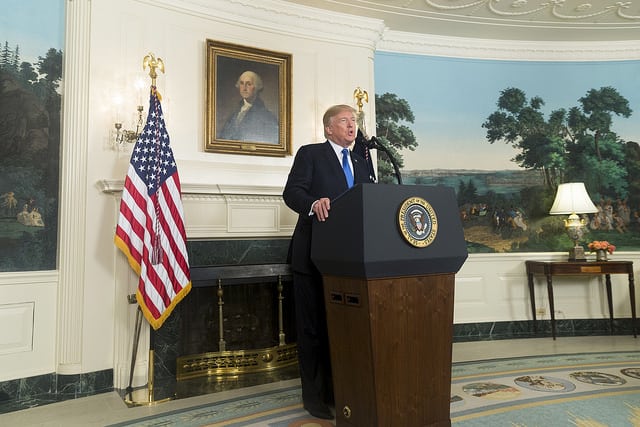Latest News

Photo: Flickr/The White House.
After some hemming and hawing, President Donald Trump signed a $1.3 trillion spending bill on Friday that will fund most government functions through the end of September. While the bill satisfied some (not all) priorities for both Republicans and Democrats, two clear winners were NASA and the National Oceanic and Atmospheric Administration (NOAA), which received $20.7 billion and $1.85 billion respectively. Here are a few of the programs that got the most significant boost in funding:
Commercial Earth Observation
In the FY2016 appropriations bill, Congress created NOAA’s commercial weather data pilot program, which allowed the agency to purchase Earth Observation (EO) data from Spire and GeoOptics. In the omnibus bill, NOAA received $6 million to continue the program — twice what the Trump administration requested for this year.
WGS 11 and 12
Although the U.S. Air Force did not request funding for the spacecraft, the bill included $600 million for the next two Wideband Global Satcom (WGS) satellites, WGS 11 and WGS 12. At the same time, the bill cut funding for the Air Force’s Analysis of Alternatives (AOA) study — which is seeking new ways to incorporate commercial space activities in military satcom — to $7 million from $14 million.
GOES-R/JPSS
The first two of four satellites are already in-orbit for the Geostationary Operational Environmental Satellite (GOES) R mission, launched by United Launch Alliance’s (ULA) Atlas 5 in November 2016 and March 2018. The bill funds the full amount requested ($518.5 million) for the remaining two satellites, and also fully funds the JPSS 2 satellite at $776 million.
James Webb Space Telescope
The omnibus fully funds the James Webb Space Telescope (JWST) — although NASA is expected to release a review this week stating the project will exceed its $8 billion cap. The bill also increases funding to $150 million for the Wide-Field Infrared Survey Telescope (WFIRST), designed to study dark energy and potentially habitable exoplanets.
Earth science
Under the new bill, NASA’s Earth science division will maintain its $1.92 billion budget from FY2017. This will allow ASA to fund its Plankton, Aerosol, Cloud, ocean Ecosystem (PACE), Climate Absolute Radiance and Refractivity Observatory (CLARREO)-Pathfinder, Orbiting Carbon Observatory (OCO) 3 and Deep Space Climate Observatory (DSCOVR) missions, all of which the Trump administration had previously proposed cancelling.
Get the latest Via Satellite news!
Subscribe Now